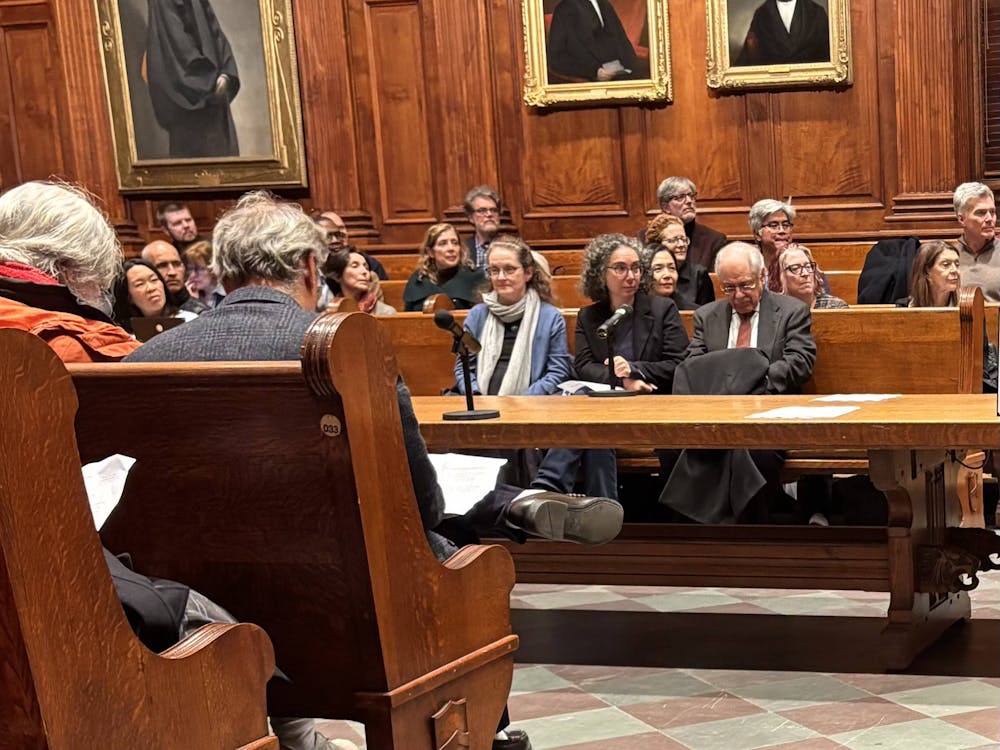The price of tuition at the University will surpass $40,000 for the first time next year; 20 years from now, students enrolled at many private universities could face tuition charges upwards of $80,000. But the Private College 529 Plan is offering to cut that price in half for prospective Princeton parents, should they choose to invest in the program today.
Like traditional college savings programs, the Private College 529 encourages families to annually invest money into a savings account. Once a child matriculates to an academic institution, his or her parents can redeem those funds to help finance four or more years of education.
Instead of receiving interest tied to the fund’s performance, Private College 529 account holders are credited with a “tuition certificate.” These certificates are calculated according to present tuition rates at the end of each fiscal year and are redeemable for up to three decades.
For instance, if parents were to invest $40,170 between July 1, 2013, and June 1, 2014, they would receive a certificate equal to one year’s tuition at Princeton or the equivalent at another participating school. When and if the child in question enrolls at Princeton, this certificate would cover tuition costs for one school year, circumventing rising fees. Certificates are valued according to each year’s investment.
“It’s like buying a 2020 model car at 2013 prices,” explained Nancy Farmer, President and CEO of the Tuition Plan Consortium Group that oversees the program.
The Private College 529 was originally formed as a consortium of over 200 founding institutions — including Princeton — and the majority of its board seats are filled by employees of those universities. In the first decade after its inception, the Private College 529 has grown to include over 270 partner universities, including Stanford and MIT.
Since 2003, 31 students have redeemed 69 certificates to help cover undergraduate fees, according to University spokesperson Martin Mbugua.
University Vice President Robert Durkee ’69, who helped create the Private College 529 over ten years ago, said the program has been successful in achieving its original goals.
“This was really an attempt to work with families that were thinking early, beginning to do some savings and offering them some very attractive incentives,” he noted. “If you have the resources now to lock in better prices, it’s a good program, and it’s worked the way we’ve wanted it to.”
Farmer said that the goal of the fund has always been to help parents curb the effects of inflation and ensure the accessibility of college education.
“Initially, 529 plans could only be sponsored by states, but the private schools thought they should do something too,” she said. “The overriding purpose has always been how do we make our tuition ... affordable to as many people as possible.”
Of course, the redemption of the certificate hinges upon a student’s acceptance to a member institution. However, Farmer explained that families who invest with the plan receive no preferential treatment in admission offices.

“[The 529 certificate] would be disclosed on the FAFSA, just like any other asset of the parent,” she noted. “Our schools agree when they sign up that participating in the plan will have no influence on admissions, positively and negatively.”
Nonetheless, several mechanisms exist to ensure the certificates do not go to waste in the event that a child does not enroll in one of these schools. Certificates can be transferred between children within the same family and can also be rolled over into conventional 529 accounts.
Although tuition accounts for the majority of the University’s undergraduate fees, room and board fees — which are not covered by Private College 529 certificates — will rise above $13,000 in 2013-14; similar fees are common at other private institutions. Farmer cited the complexity of housing and meal options as a barrier to including room and board in the program’s coverage.
“What we would have to do is ask the parents of a 12-year-old how much they would like to spend on their child’s housing and meal-plan in six years’ time,” she said.
“That’s part of the reason we encourage parents to pursue other savings options, like a regular 529 plan,” she said. “We want people to think about college savings like retirement plan: What you need is a diversified portfolio.”
Since 2010, the fund itself has been managed by OppenheimerFunds, an asset management firm based in New York City. Jerry Webman, a former assistant professor at the Wilson School, is OppenheimerFunds’ chief economist.







